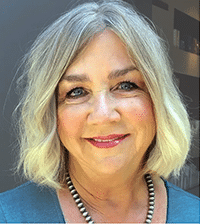 By DIANE DENISH
By DIANE DENISH
Corner to Corner
© 2024 New Mexico News Services
In the U. S. there is something called the polling industrial complex. It’s a description of how polling has changed over 50 years. It has grown and become more complex and less understandable.
Researchers define polling as the ability of organizations outside of government to gather, interpret, and publish information about voter views on issues and candidates.
People often say when a poll comes out, “No one polled me!” That holds true for most Americans. It’s an indication of the skepticism people have about polls with which they don’t agree.
If voters want to be able to look at polls knowledgeably there are some key things to know.
First, polling has changed dramatically over time, as have many things in the political consulting industry.
Twenty-five years ago, pollsters were calling land lines and had response rates upwards of 50%. Today polls are conducted online, through text messaging, and on cell phones. Today response rates have dropped to the single digits in most instances.
Polls are a snapshot in time. Voters tend to believe they are predictive of what will happen in November – a theme magnified by mainstream media. Nothing could be further from the truth.
As I write, it is 198 days until the Election Day on Nov. 5. Any poll you see today will be irrelevant as soon as tomorrow.
Different polling organizations conduct surveys differently. Methods of surveys include live interviews by telephone (CNN), on-line opt-in panels (CBS and Politico) and online polls of respondents recruited offline (Associated Press and Pew Research). Some other less dependable pollsters use a combination of robocalls and opt-in panels.
Different methods can often have an effect on data quality. According to Pew Research and the Roper Center for Opinion Research, opt-in online polls (such as Survey Monkey) generally have a much higher error rate than live polling methods.
This brings me to what is called “margin of error”. Generally, commentators and consultants have led us to believe that a narrow 3% margin-of-error rate represents an accurate poll – assuming that the random samples may only slightly differ from the population. Pew Research cautions that a more accurate margin of error rate is 6%, when you consider the possibilities of mismeasurement, skewed group of respondents, or nonresponse.
There is sometimes an assumption that exceptionally large sample sizes are better. The theory that larger sample size is a sign of quality is outdated. Nate Cohen of the New York Times pointed out recently that because of increasing costs of polling, polls with huge samples are using cheaper and problematic methods. What may be true in textbook theory is not necessarily true in reality.
Polls may actually affect the outcome of elections. Sometime less reliable methodology, poorly weighted or designed polls, conclude a candidate is extremely likely to win – ultimately suppressing the vote. Conversely, polls showing an extremely close race might push infrequent voters to vote.
What surprises Americans most in presidential elections is that polls can accurately identify the candidate most preferred nationally and not predict the winner. That happened in 2000 when Al Gore won the national popular vote but ultimately lost the electoral vote. In 2016, Hillary Clinton won the popular vote by 2.87 million votes and lost the electoral vote. In 2020 that changed, with Biden winning the popular and the electoral votes.
What can we learn from understanding polling, methodology and results? Not as much as we would like. As Simon Rosenburg of Hopium Chronicles says, “Polls are a sketch, not a painting.”
My conclusion is that albeit trite, it’s true: The only poll that really counts is when we all go vote early, absentee or on Election Day.

